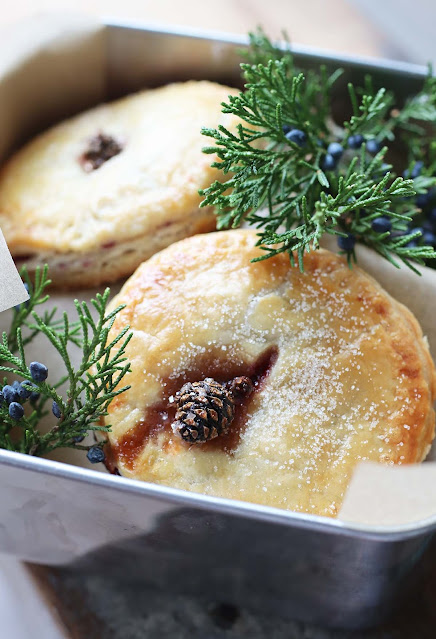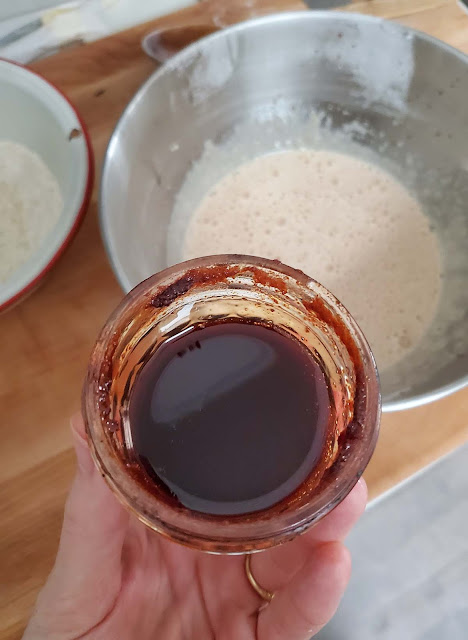I wrote a story about making pine cone jam for Gardenista, and included my updated recipe for the delicious, useful, intriguing stuff. In my research that spring of 2019, when I first began playing with the jam-making, I learned that the cooking-syrup for the cones is sometimes sold as "pine honey"- it's often not honey, of course. But it is very, very good. I have two small jars of it and I eke the stuff out. (The cones above are the babies from an old Himalayan pine in the neighborhood. When mature they are very, very long.)
It can take a couple of years for a female cone to mature from its sappy baby-form to the dry woody, quintessential pine cone we know, so you'll often see different stages of cones on one tree at a given time. The male cones are much softer and produce pollen, before withering and dropping off (...).
These hand pies for a forage-picnic were filled with a mixture of black currants, juniper, and pine cone honey. The candy-like cone was a garnish that baked into a toffee-like treat.
And then... thanks to the diversity of New York City's population and the stores that cater to their appetites and soul foods, I found pine cone jam, ready-made, on a shelf! This was last year. The supermarket is Gala International, trending very Eastern European and Russian. (I have foraged happily there before for interesting things like fresh purslane, frozen black currants and red currants, and am mesmerized by their preserves, which are basically all the things I actually forage!).
Baby pines cones are ready to collect now, depending on the species that grows near you. The jam and the honey are food and medicine, and I find them wildly useful.
See the whole piece on Gardenista.
________________




Have baby pine cones in the forests nearby, must make this! You always manage to make me enthusiastic about trying new things. I just wanted to make a small remark about the full article in Gardenista - you explain that bees can't make honey from pines because pines don't produce nectar. Yes of course the last part is true, but bees DO make honey from conifers, including pine and fir, as they lick the honeydew (miellat) produced by aphids that feed on the needles. So in Turkey for example pine honey is definitely from bees. It's lovely and considered very healthy. My father's bees in France used to produce fir honey when the conditions were right.
ReplyDeleteThank you so much! I remember learning about the honeydew from a foraging friend, Pascal Baudar. Your father's honey sounds wonderful.
DeleteYou are so adventurous
ReplyDeleteThis comment has been removed by a blog administrator.
ReplyDeleteThis made me so happy to read...so happy! Delightful and interesting information and I'm hungry for one of your little hand pies.
ReplyDelete